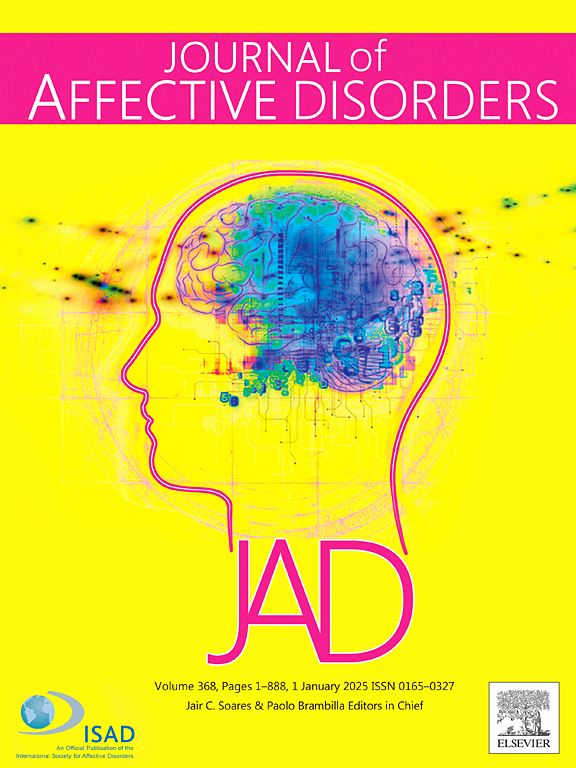Abnormal resting-state functional connectivity in panic disorder: An exploratory whole-brain MRI study
IF 4.9
2区 医学
Q1 CLINICAL NEUROLOGY
引用次数: 0
Abstract
Background
Panic disorder (PD) is characterized by prolonged anxiety about panic attacks, significantly impairing social functioning. Despite this impact, resting-state brain function anomalies in PD are insufficiently understood. We conducted a data-driven investigation of resting-state functional connectivity (rsFC) in PD.
Methods
MRI scans and clinical assessments were performed on PD patients and healthy controls (HCs). Differences in rsFC were analyzed using the cluster-wise analysis of 9045 connections among 135 regions across the brain. For significant clusters, correlations between rsFC and clinical scores for panic and anxiety symptoms were examined.
Results
Thirty-nine patients and 44 HCs were included in the analyses. A significant cluster-level difference in rsFC was observed between groups, involving connections between the medial occipital region and the paracingulate gyrus within the anterior cingulate cortex (ACC). In this cluster, PD patients exhibited higher rsFC in 11 connections, with eight of these showing positive correlations with State-Trait Anxiety Inventory scores.
Limitations
The comprehensive analysis of 9045 connections may have diluted statistical power, potentially obscuring other relevant connections.
Conclusions
Increased rsFC between the medial occipital region and the ACC was observed in PD. This suggests that anxiety-evoking visual imagery generated in the occipital lobe may disproportionately influence self-referential thought process mediated by the ACC. Interventions targeting visual imagery may help alleviate daily anxiety in PD patients.
求助全文
约1分钟内获得全文
求助全文
来源期刊

Journal of affective disorders
医学-精神病学
CiteScore
10.90
自引率
6.10%
发文量
1319
审稿时长
9.3 weeks
期刊介绍:
The Journal of Affective Disorders publishes papers concerned with affective disorders in the widest sense: depression, mania, mood spectrum, emotions and personality, anxiety and stress. It is interdisciplinary and aims to bring together different approaches for a diverse readership. Top quality papers will be accepted dealing with any aspect of affective disorders, including neuroimaging, cognitive neurosciences, genetics, molecular biology, experimental and clinical neurosciences, pharmacology, neuroimmunoendocrinology, intervention and treatment trials.
 求助内容:
求助内容: 应助结果提醒方式:
应助结果提醒方式:


